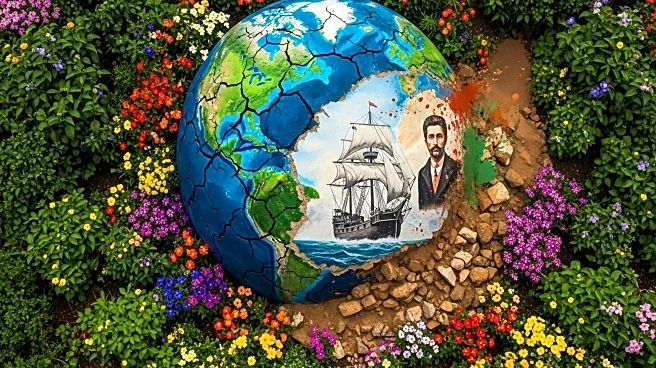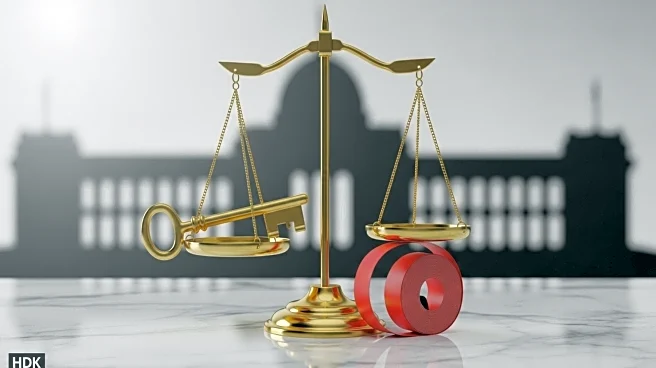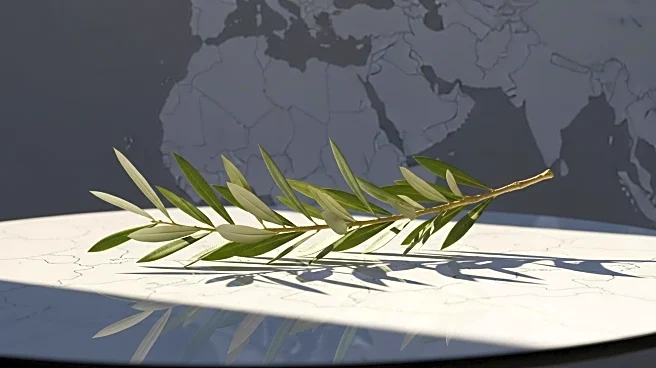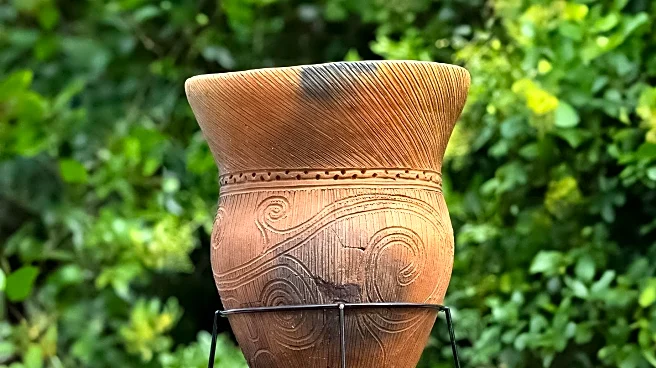What is the story about?
What's Happening?
Climate activists from the group 'Futuro Vegetal' vandalized a mural of Christopher Columbus at Madrid's Naval Museum. The incident, captured on video, involved two women throwing red paint on the mural titled 'First Tribute to Christopher Columbus,' painted by Jose Garnelo in 1892. The activists were quickly apprehended by museum security and later arrested, facing charges related to crimes against cultural heritage. The group unfurled a banner stating 'October 12, nothing to celebrate. Ecosocial justice,' highlighting their protest against the celebration of Columbus Day, which they argue commemorates oppression and genocide against indigenous peoples.
Why It's Important?
The vandalism incident underscores ongoing debates about the legacy of Christopher Columbus and the celebration of Columbus Day. While Columbus is credited with paving the way for European settlement in the Americas, his voyages are controversial due to their impact on indigenous populations. The protest by 'Futuro Vegetal' reflects broader societal discussions about historical figures and their commemorations, particularly in the context of cultural heritage and social justice. This event may influence public opinion and policy regarding the celebration of Columbus Day in the U.S. and abroad.
What's Next?
The arrest of the activists may lead to legal proceedings that could further spotlight the debate over Columbus Day and its significance. Museums and cultural institutions might face increased pressure to address the narratives surrounding historical figures like Columbus. Additionally, this incident could inspire similar protests or actions by other activist groups, potentially affecting public celebrations and policies related to historical commemorations.
Beyond the Headlines
The protest raises ethical questions about the preservation of cultural heritage versus the right to protest perceived injustices. It also highlights the tension between historical narratives and contemporary values, prompting discussions about how societies choose to remember and honor their past. This could lead to long-term shifts in how historical figures are portrayed in public spaces and educational materials.
AI Generated Content
Do you find this article useful?














